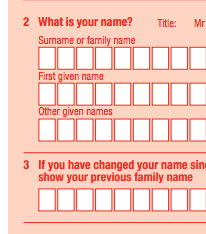This can sometimes be a source of confusion, but it's quite simple. The blank form is a controlled document and once it is filled in with data it becomes a record.

Forms are controlled documents
Companies use forms to collect data of various kinds – customer enquiries, work orders, process controls, time sheets, inspection checklists, registers, etc. The forms may be paper based or defined by the software used.
Forms are created to fill a business need. This may be to ensure that process steps are completed, for legal reasons, or to collect data for analysis. A well-designed form should be easy to use, collects only what is necessary, and can sometimes even enhance the process it belongs to.
Forms need to be controlled so that the data collected is consistent and meets the needs the form was designed for. If users are free to adapt the form to their own needs, unnecessary data may be collected or important data can be lost. The form may then lose its purpose and cease to be useful.
Forms are controlled in the same way as other documents – they are kept under version control, contain document control information, and are listed on the document register. A form can be controlled together with the related procedure, e.g. as an appendix, or controlled seperately.
Completed forms are filed - as records.
Records are stored rather than version controlled. Each record holds information from a certain date (and time) and will not be updated, so there is no need for version control. Records contain historical data and have different requirements which relate to storage, readability, identification, protection, retrieval, retention and disposal.